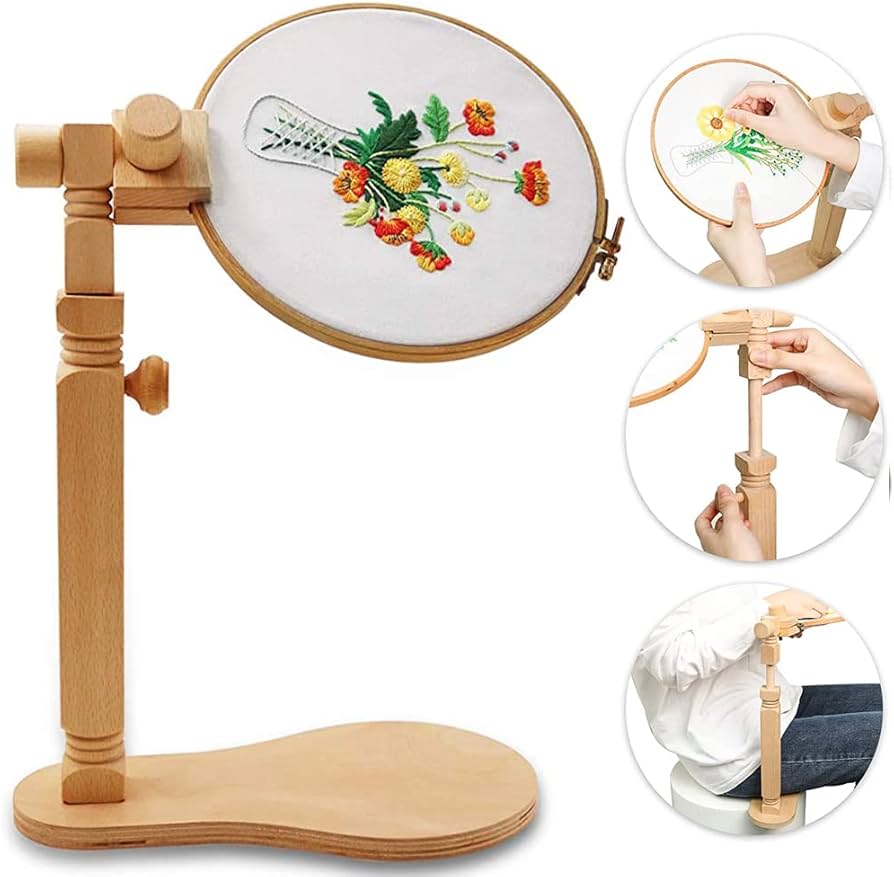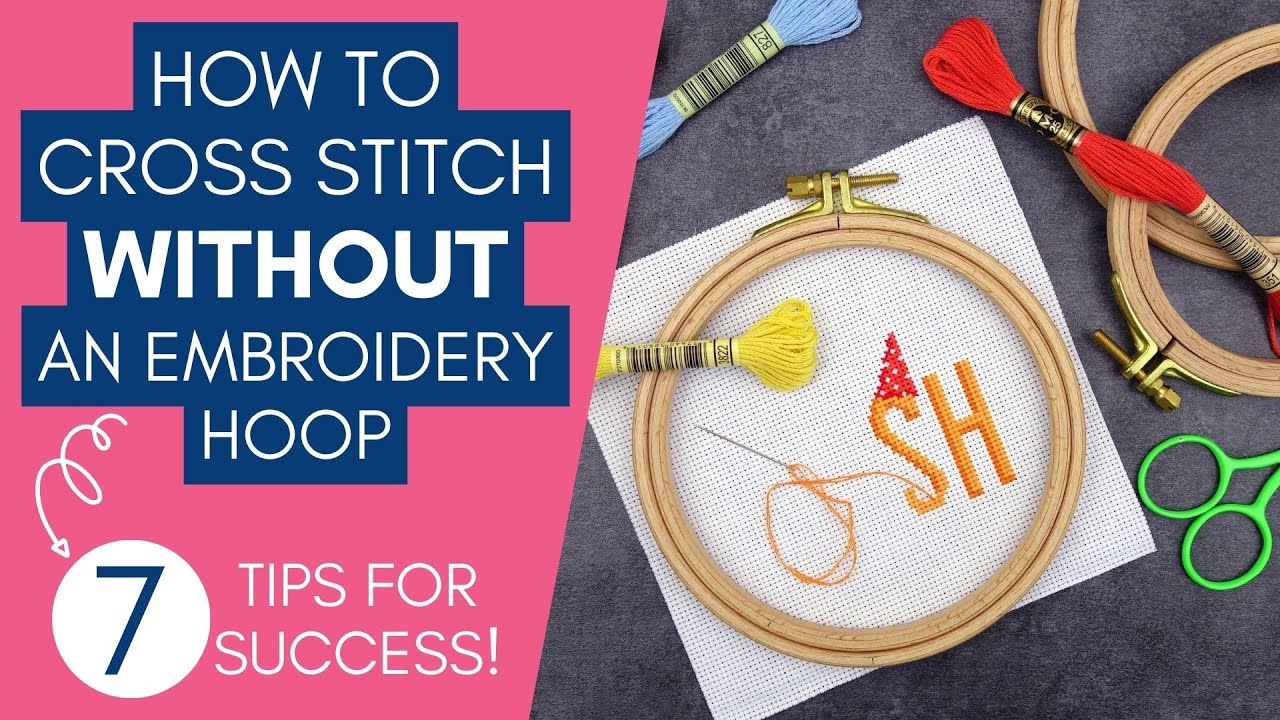An embroidery hoop is one of the most common tools used in stitching, helping to keep fabric taut and your stitches even. But what if you don’t have one on hand, or you prefer working without it? Whether you’re a beginner exploring embroidery kits or an experienced crafter looking for flexibility, there are several smart alternatives to traditional embroidery hoops that work just as well. In this guide, we’ll cover the best substitutes, how to use them effectively, and when they might even be better than a standard hoop.
Why You Might Want to Stitch Without a Hoop
While embroidery hoops are useful for maintaining tension, they aren’t always ideal for every project. Some fabrics are too delicate or thick for a hoop, while certain techniques-like goldwork or stumpwork-benefit from being done on a flat surface. Additionally, working without a hoop can feel more natural for small or detailed pieces, giving you better control over your stitches.
If you’ve ever purchased embroidery kits for adults or embroidery kits for beginners, you’ve probably noticed that many already include a hoop. However, if you prefer a more flexible setup, the alternatives below can help you create beautiful results without it.
1. Embroidery Frames and Stands
An embroidery frame is one of the best alternatives to a hoop. Unlike round hoops, frames stretch the fabric across a rectangular or square surface, allowing for even tension across a larger area.

Advantages:
- Great for larger projects
- Helps prevent fabric distortion
- Can remain mounted during breaks
Embroidery stands, on the other hand, hold the frame in place, freeing both hands for stitching. They are especially useful for advanced stitchers or for those who use Scandinavian embroidery kits or detailed landscape designs that require consistent tension.
2. Clip Frames (Scroll Frames)
A scroll frame consists of two rods and sidebars that hold the fabric rolled between them. This allows you to adjust and work on different sections of your project without constantly rehooping.
Why it works:
- Ideal for long or continuous designs
- Reduces creasing in your finished piece
- Easy to tighten or loosen as you go
These are often used for professional or large embroidery projects, such as wall decor pieces or counted cross-stitch samplers.
3. Q-Snap Frames
Q-Snap frames are modern, lightweight, and simple to use. They are made of interlocking plastic tubes that form a square or rectangular frame. The fabric is stretched across the frame and secured with plastic clips.
Benefits:
- Holds fabric tightly without damaging it
- Lightweight and portable
- Suitable for both beginner embroidery kits and complex designs
Q-Snap frames are especially popular with stitchers who need a flexible and quick setup.
4. Embroidery Stretch Bars or Canvas Frames
If you’re working on a piece you intend to frame later, embroidery stretch bars (similar to those used for painting canvases) are an excellent option. The fabric is stretched and stapled or pinned to the wooden frame, allowing you to embroider directly onto the mounted surface.
Why it’s a great option:
- Creates a professional-looking finished piece
- No re-hooping required
- Perfect for framing or wall decor
This method works beautifully for artistic pieces found in unique embroidery kits, especially designs meant to be displayed rather than worn.
5. Embroidery on Felt or Thick Fabric Without Support
Certain fabrics, like felt, denim, or heavy cotton, don’t always need a hoop or frame. Their sturdy texture naturally holds tension, making it easy to embroider directly on the material.
Tips for success:
- Use shorter stitches to maintain neatness
- Keep your thread tension consistent
- Rest your hand lightly to avoid stretching the fabric
This approach works well for small motifs, patches, or embellishments on clothing or bags.
6. DIY Embroidery Hoop Alternatives
If you want a quick and affordable solution, you can make your own embroidery support at home:
Cardboard Frame: Cut a square window out of sturdy cardboard, tape your fabric around the edges, and hold it flat while stitching.
Plastic Lid or Old Frame: A round plastic lid or old picture frame can be repurposed to hold your fabric in place temporarily.
Embroidery Rings Made from Wire or Bamboo: Craft stores sometimes sell inexpensive rings that can mimic the function of a hoop.
While not perfect, these makeshift solutions are useful for small projects or travel stitching.
7. Embroidery in Hand (Without Any Frame or Hoop)
Many stitchers enjoy the freedom of embroidering directly in hand. This technique involves holding the fabric gently while stitching, without using any tensioning device.
Advantages:
- No need for extra tools
- Offers direct control and flexibility
- Ideal for quick, simple designs
For best results, use smaller pieces of fabric and keep your stitches even. If you’re new to embroidery, starting with a beginner embroidery kit can help you practice this technique easily.
Tips for Working Without a Hoop
If you choose to skip the hoop, here are a few things to keep in mind:
Choose the right fabric: Medium-weight cotton, linen, or felt works best.
Keep your fabric clean: Wash your hands before working to prevent marks or oils from transferring.
Use a stabilizer: For thin or stretchy fabrics, an embroidery stabilizer keeps your stitches even.
Iron your work after finishing: Lightly press from the back to flatten the stitches.
Final Thoughts
You don’t need a traditional embroidery hoop to create beautiful handmade art. Whether you use a frame, Q-Snap, or simply embroider in hand, each method offers a unique way to enjoy your craft. For those looking for guided projects, The Embroidery Kits offers a wide selection of embroidery kits for adults, embroidery kits for beginners, and unique embroidery kits that include everything you need to get started – hoop or no hoop.
Embroidery is about creativity, patience, and enjoying the process. Whichever method you choose, your finished piece will always be one of a kind.

